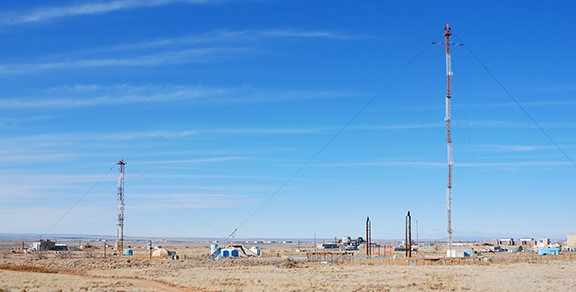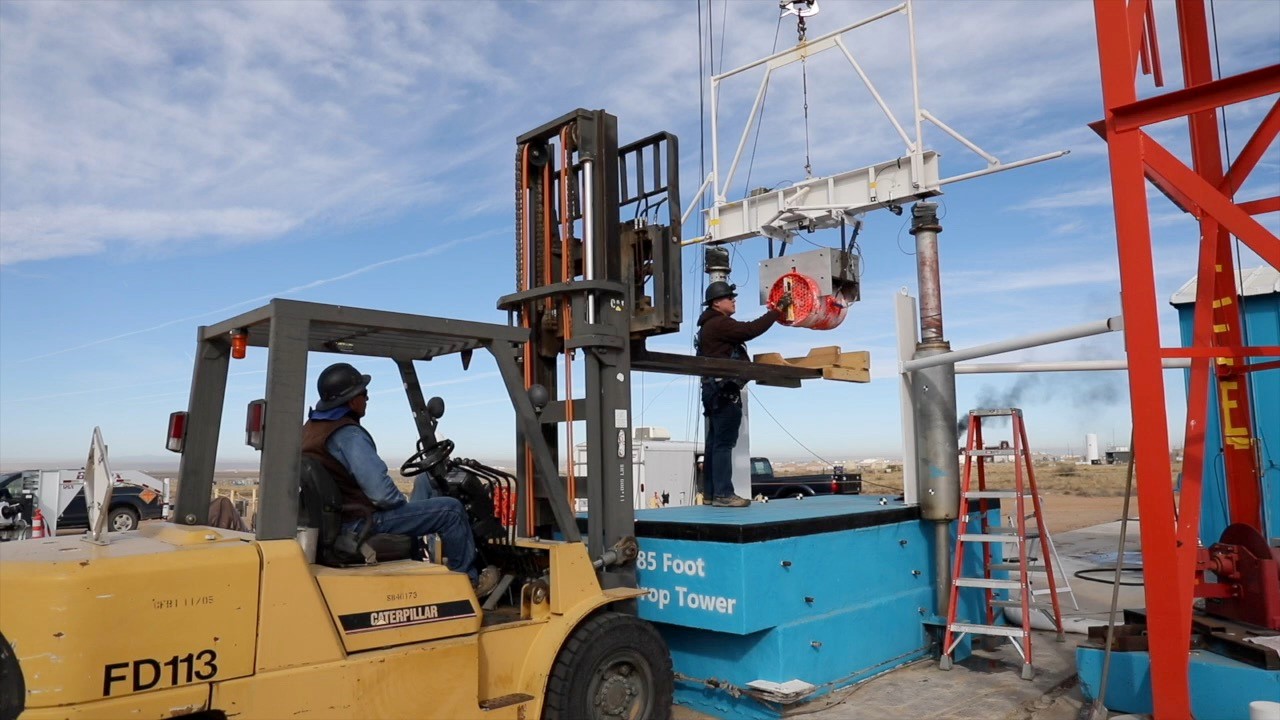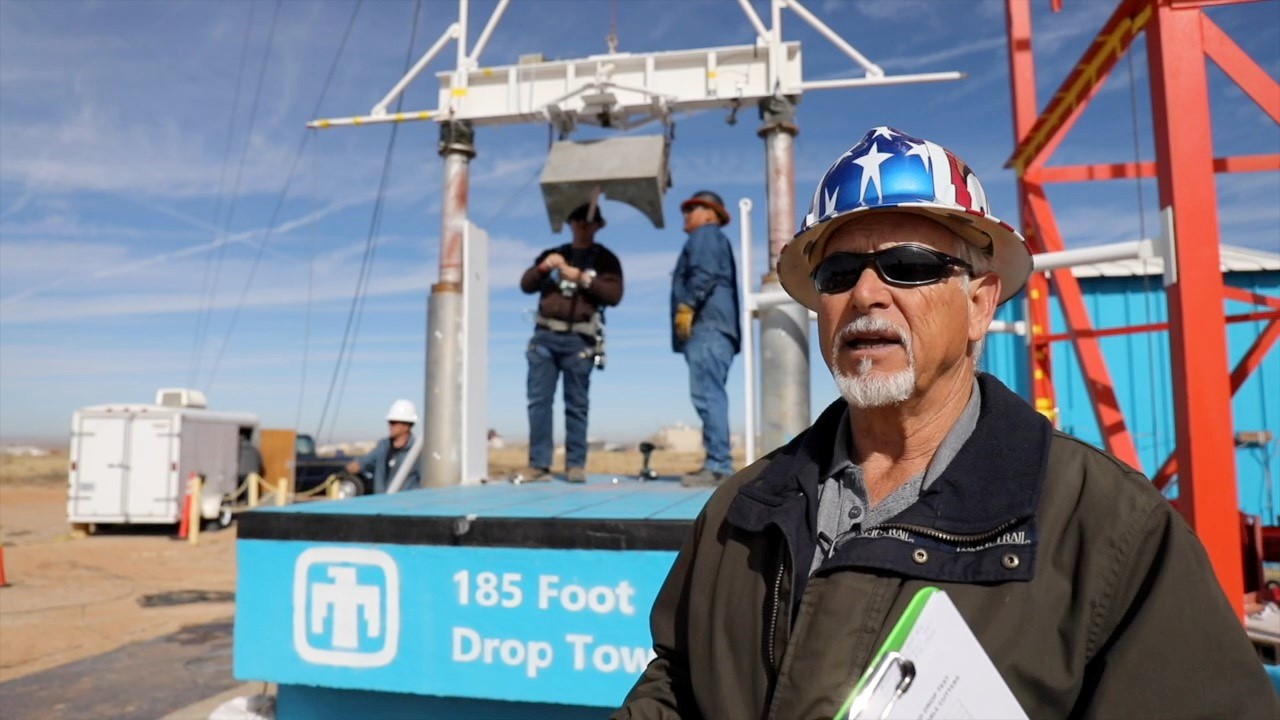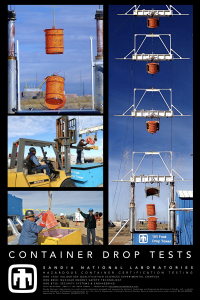The 185-foot Drop Tower Facility at Sandia National Laboratories in Albuquerque, New Mexico provides a controlled environment for testing a wide variety of small and large test items. This facility can test items which:
- Contain radioactive materials
- Contain high explosives
Routine tests include shipping container certification, simulated transportation accidents, and moderate velocity impact. Tests units can be temperature-conditioned from temperatures of -65°C to 100°C. Test impact targets include dirt, reinforced concrete (5 1/2 x 12 x 5 1/2 feet thick), steel plate (5 1/2 x 12 x 4 inches thick), or other customer-specified targets. Crush tests also are routinely conducted by dropping a steel mass onto a test item positioned on the target. In a similar manner, puncture tests are conducted by dropping a test item onto a spike in the target.
This facility can provide high-speed (5MHz s/s) digital data acquisition on up to 64 channels of hardwired instrumentation. A higher number of instrumentation data channels can be arranged. Transducers to measure acceleration, pressure, temperature, and strain are most often used.

Guided Drop Testing
The vertical trolley guided system at the 185-foot Drop Tower Facility consists of two cables stretched vertically between the top of the tower and the impact target on the ground. The trolley is attached to tubes that slide over the guide cables, and can be hoisted to and released from a maximum height of 175 feet, with items that weight up to 2,500 lbs. Test items can be attached to the trolley in any desired test orientation, and can maintain the orientation impact. The trolley guided system is well-suited for testing shipping containers, systems, components and other items that require precise and repeatable impact conditions, at impact velocities of 100 ft/sec or less.

Incline Trolley Drop Testing
A trolley mounted on the 185-foot tower main incline load cable is used to lift test items (weighing up to 15,000 lbs) to the height of 165 feet. The main cable is anchored to a concrete anchor on the ground, and forms an angle of approximately 30 degrees with the tower. Test items can be configured in any orientation and released from a moving trolley to provide test items with a combination of horizontal and vertical velocities, up to 100 feet/second. Impact targets from dirt to steel can be fabricated, per test requirements.
Pull-Up and Vibration Testing
The 185-foot Drop Tower also features a motor assisted pull-down, pull-up or lift, and a pull-up/vibration combined environment using a programable, high-speed winch and shaker. Gravity drops, assisted by the pull-down feature, can reach impact speeds of 150 ft/sec at the 185-foot tower, and 180 ft/sec at the 300-foot tower. Test items can also be lifted at accelerations up to 1 G and speeds over 50 ft/sec with a combined weight of 1,000 lb. In a similar manner, pull-up/vibration combined environment testing can be performed with test units that weigh up to 10 lbs, at frequencies of 20 Hz to 2,000 Hz.

The 185-foot Drop Tower Facility can be configured to meet unusual or unique customer needs and testing criteria.
Downloadable poster
